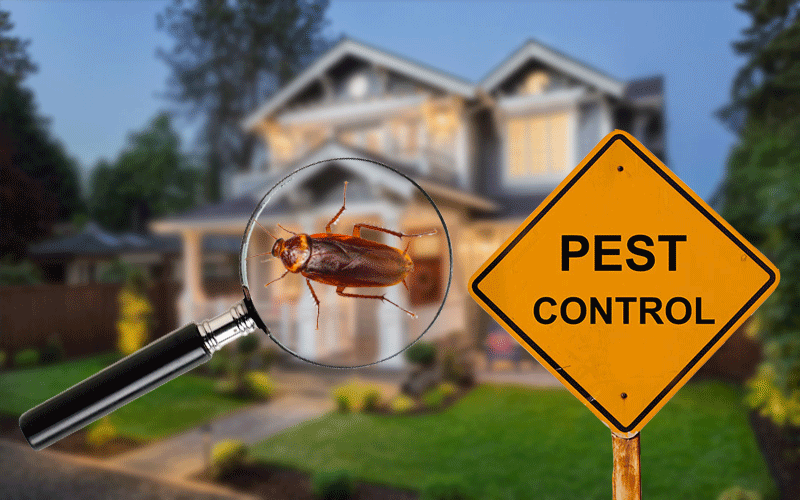High Quality A1 Pest Control Services Charlotte - Safeguard Your Home
High Quality A1 Pest Control Services Charlotte - Safeguard Your Home
Blog Article
Bed Insect Treatment Malfunction: Contrasting Chemical Vs. Non-Chemical Solutions
In the realm of bug control, particularly when handling the persistent issue of bed bugs, the choice between chemical and non-chemical treatment remedies can be a pivotal one. Both methods supply distinctive advantages and disadvantages, affecting factors such as effectiveness, safety factors to consider, and overall expense. By checking out the nuanced details of each method, a more clear understanding of which course to seek in dealing with a bed bug infestation can be achieved.
Efficiency of Chemical Treatments
Chemical treatments for bed pest problems have been extensively acknowledged for their fast and powerful effectiveness in eliminating these parasites. When thinking about the performance of chemical therapies, it is critical to recognize that they can supply a detailed and quick solution to a bed bug trouble. Expert pest control men often rely upon pesticides to target bed pests at different stages of their life cycle, consisting of eggs, nymphs, and adults. These chemicals commonly function by interfering with the bed pests' nerves, resulting in paralysis and eventual fatality.
Additionally, chemical treatments have the benefit of providing recurring results, suggesting that they can proceed to get rid of bed pests even after the preliminary application. This recurring activity is specifically advantageous in combating any possible re-infestations. Furthermore, the fast activity of chemical therapies can bring alleviation to individuals encountering extreme bed pest infestations, enabling them to reclaim control of their home rapidly.
Safety Concerns With Chemical Solutions
One vital aspect that needs cautious factor to consider when making use of chemical remedies for bed bug treatment is guaranteeing the safety and security of passengers and the environment. Exposure to certain chemicals used in bed bug therapies can lead to respiratory system problems, skin inflammation, or various other adverse reactions, specifically in individuals with pre-existing conditions or sensitivities.
Furthermore, the ecological influence of chemical remedies is an additional substantial factor to consider. Some pesticides made use of in bed pest therapies may be hazardous to helpful bugs, wildlife, and ecosystems if they seep into the dirt or water supply. It is necessary to utilize chemical therapies judiciously, adhering to safety and security guidelines, and considering less toxic alternatives to minimize these dangers and ensure the reliable and risk-free monitoring of bed pest problems.
Advantages of Non-Chemical Approaches
Considering the potential security worries and environmental influence linked with chemical services for bed bug therapy, checking out non-chemical methods presents an encouraging choice with numerous distinctive advantages. Non-chemical treatments are ecologically pleasant, as they do not add to air or water pollution, making them a sustainable selection for pest control.
Additionally, non-chemical services can be effective in targeting bed bugs, including hard-to-reach locations where chemical therapies might not pass through. Approaches such as warmth therapy, vacuuming, steam cleaning, and bed mattress encasements offer detailed obliteration without using dangerous chemicals. In addition, non-chemical methods can be less disruptive, needing very little preparation and permitting quicker reentry into dealt with locations. On the whole, selecting non-chemical bed pest treatment techniques not just focuses on safety and security and environmental defense but also makes certain thorough and efficient bug control.
Limitations of Non-Chemical Treatments

Furthermore, non-chemical treatments usually require several applications to accomplish effective obliteration. This can be lengthy and might not always ensure full removal of all bed insects and their eggs, particularly in hidden or hard-to-reach locations.
Moreover, the success of non-chemical therapies greatly counts on appropriate application and thoroughness, which can be challenging for individuals without expert view website expertise. Inadequate application of non-chemical methods may result in incomplete elimination, bring about relentless problems and the requirement for added treatments.
Consequently, while non-chemical therapies have their benefits, it is necessary to acknowledge these constraints and consider them when determining one of the most efficient method for handling bed pest problems.
Expense Comparison: Chemical Vs. Non-Chemical Options
Offered the restrictions linked with non-chemical treatments, a crucial element to review in the context of bed bug administration is the price comparison between chemical and non-chemical options. In comparison, non-chemical treatments like warm treatment or steam can be more expensive, with costs varying from $1,000 to $6,000 for an entire home. While the first price of chemical treatments may seem reduced, several therapies might be required to fully pop over here eliminate the problem, possibly raising the overall cost.
Final Thought

Taking into consideration the potential security issues and environmental effect associated with chemical remedies for bed insect treatment, exploring non-chemical approaches provides an appealing alternative with a number of distinctive benefits.Given the constraints associated with non-chemical therapies, a necessary element to examine in the context of bed insect monitoring is the expense comparison in between chemical and non-chemical alternatives. In comparison, non-chemical treatments like heat therapy or vapor can be a lot more expensive, with costs varying from $1,000 to $6,000 for an entire home. While the first cost of chemical treatments may seem lower, numerous treatments might be needed to totally eradicate the invasion, possibly boosting the overall expense.In conclusion, when comparing chemical and non-chemical bed insect therapy alternatives, it is vital to consider efficiency, safety, advantages, limitations, and expense.
Report this page